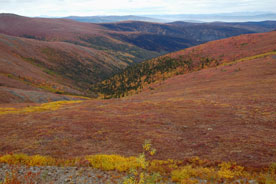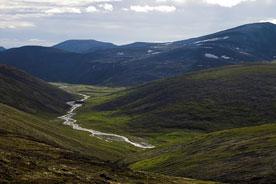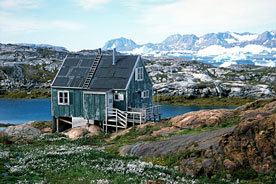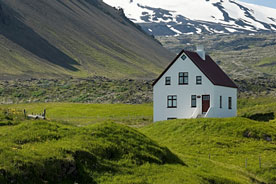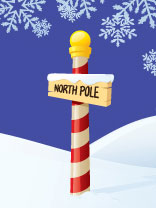
Subarctic Latitudes
Arctic Map > The Subarctic
Large areas of Canada and Siberia are included in the subarctic region, as is the south of Greenland. All of Iceland is located in the subarctic. The northernmost part of the British Isles are in the subarctic, as are much of Norway, Sweden, and Finland. The northern parts of Estonia and Latvia are included in the region, as is a large portion of Russia. Northern Mongolia and most of Alaska are in the subarctic region as well.
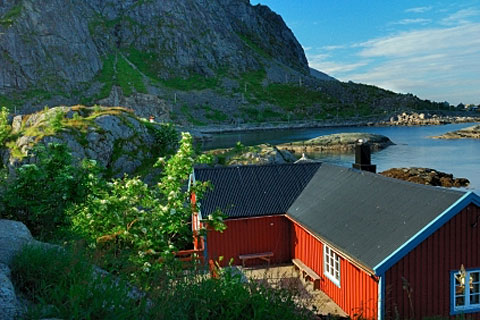 Summer Lodge, Moskenesoya Island, Lofoten, Norway
Summer Lodge, Moskenesoya Island, Lofoten, Norway
The climate in the subarctic is known for seasonal extremes. While during the winter months the temperature can plummet to -40 degrees Celsius, sometimes temperatures can rise to 30 degrees Celsius in the summer. There is usually between 40 and 100 centimeters of precipitation a year, much of which is in the form of snow. The levels of precipitation can be higher in the maritime areas of the subarctic, which are often home to large glaciers. These glaciers melt to form fresh water or eventually fall into the ocean.
|
Ocean Waves along the Coastline of Iceland
|
Vegetation in the subarctic region comprises mostly coniferous trees, and because of the acidic soil in the region, mosses and lichens are the most common type of ground cover. In some milder locations, deciduous trees also survive. Regions where the soil is waterlogged support only grasses and sedges, while some of the colder areas, where the ground never completely thaws out, are covered in permafrost.
Over the years, the subarctic region has been used for mining, quarrying, and oil extraction. Subarctic regions in Canada, Greenland, and Siberia are also known for their valuable minerals, including aluminum, uranium, lead, zinc, cobalt, nickel, and molybdenum.
While the subarctic region is full of natural beauty, its harsh conditions make it a difficult place to live, and it is very sparsely settled. Communication remains difficult in the area, except by satellite phone, and there are few roads or railways. The best way to explore the subarctic today is by boat, helicopter, and floatplane.
